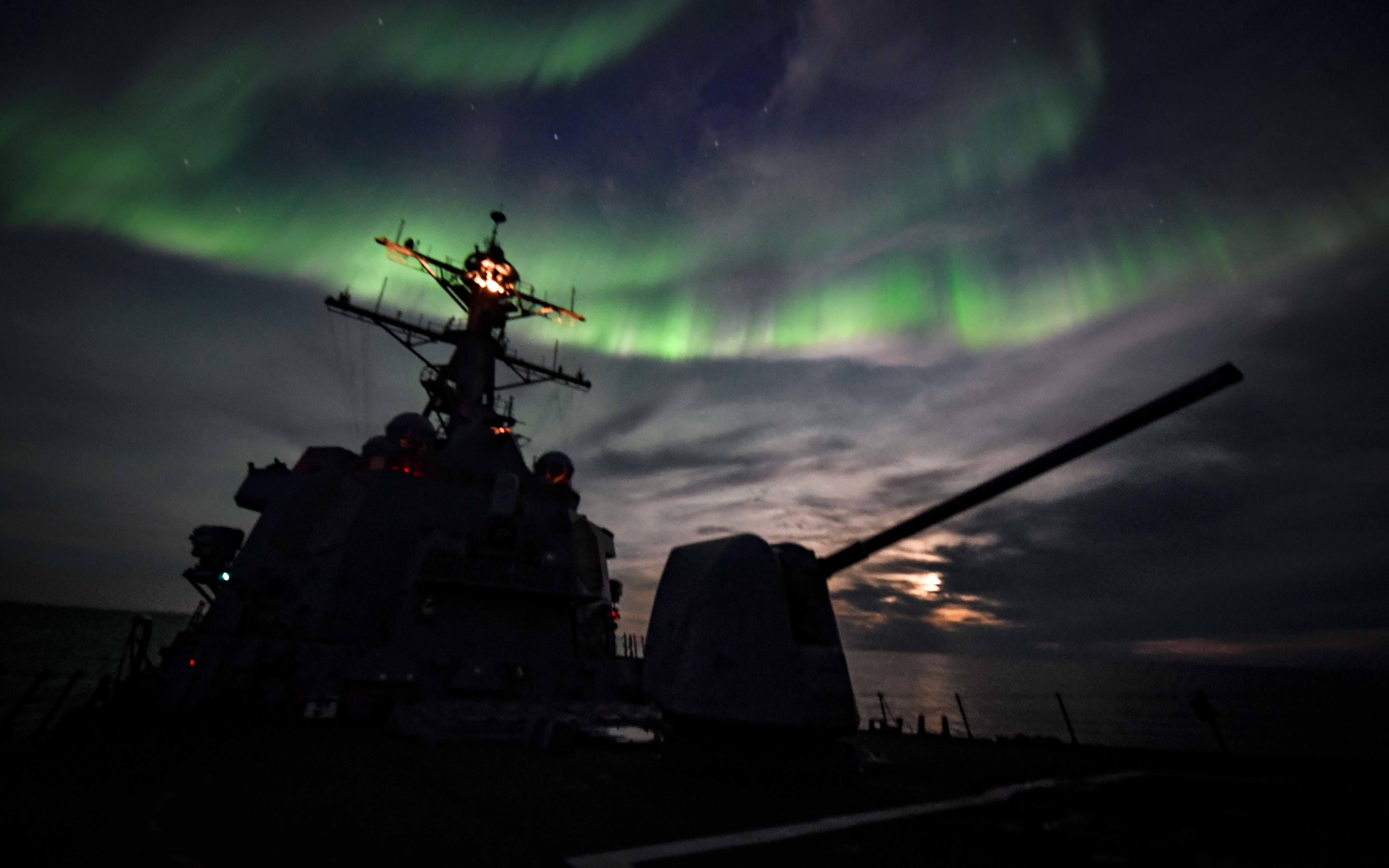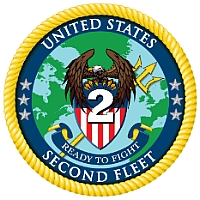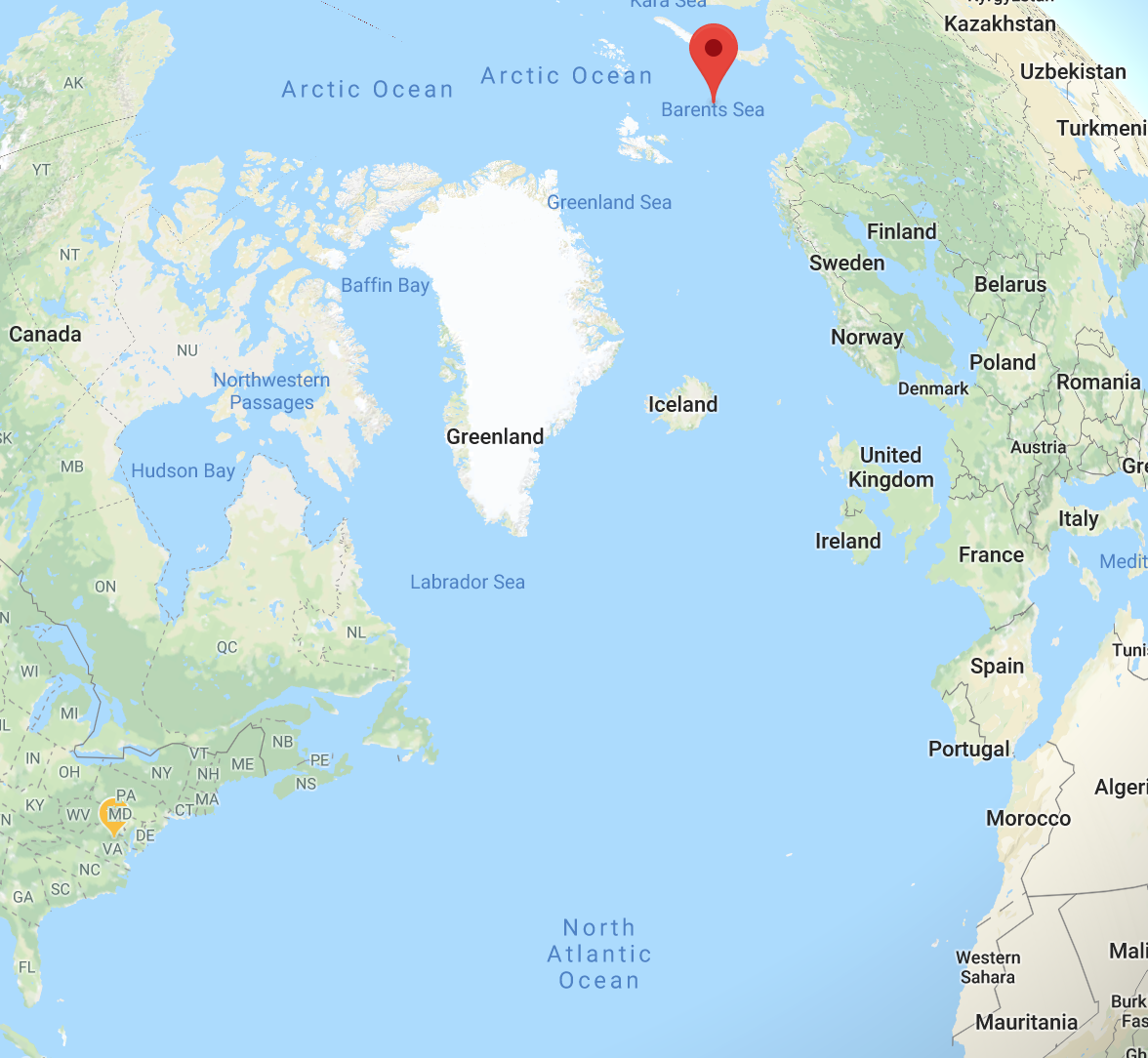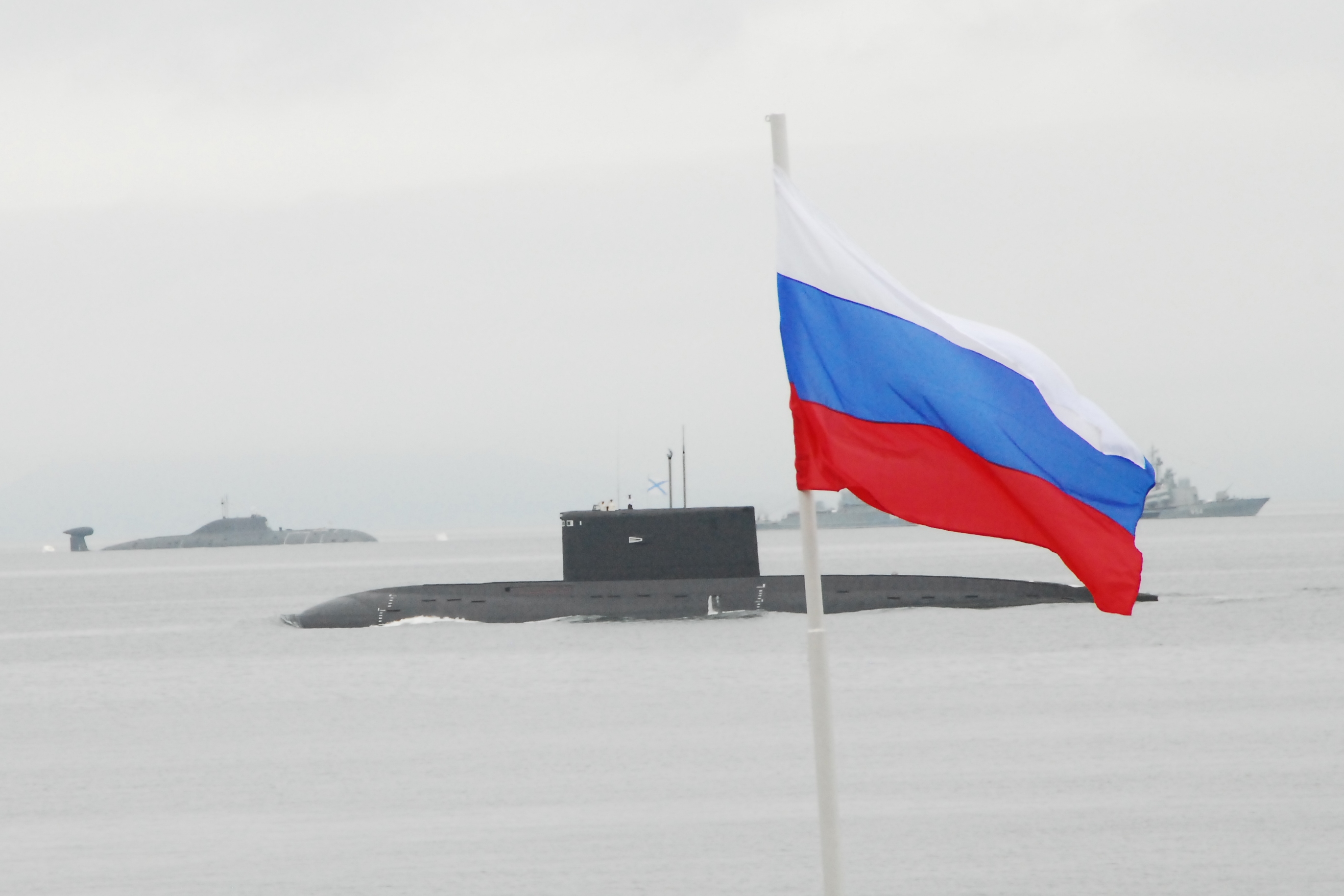
ABOARD AIRCRAFT CARRIER USS GEORGE H.W. BUSH – The boundaries of the Navy’s reestablished U.S. 2nd Fleet extends well past the old submarine stomping grounds of the Cold War and into waters north of Scandinavia and the Arctic Circle, near the submarine headquarters of Russia’s Northern Fleet, Chief of Naval Operations John Richardson said on Friday.
“A new 2nd Fleet increases our strategic flexibility to respond — from the Eastern Seaboard to the Barents Sea,” Richardson said. “Second Fleet will approach the North Atlantic as one continuous operational space, and conduct expeditionary fleet operations where and when needed.”
Richardson and new 2nd Fleet commander Vice Adm. Andrew Lewis stressed the standup of the new command was a reflection of the National Defense Strategy from Secretary of Defense James Mattis that signaled a return to “great power competition” with nation-states, rather than the low-intensity ground wars the U.S. has waged since 2001.

“We will not simply pick up where we left off. We are going to aggressively and quickly rebuild this command into an operational warfighting organization,” Lewis said.
Former Deputy Secretary of Defense Bob Work told USNI News on Friday the extension of the boundary to Russia’s doorstep was in line with the new Mattis-led strategy.
“This truly is about great power competition and demonstrating it to the great powers that we can operate in waters nearby when and where we chose to do so. It’s signaling we’re here. We’re ready to go,” Work said.
“In China we have a rival that is really has a full-spectrum naval capability. The Russians truly are more of an undersea competitor. The best way to get there is to operate in those grounds close to them and not let them break out into the open ocean.”

Former NATO Supreme Allied Commander Europe retired Adm. James Stavridis told USNI News on Friday the extension of the border was a reflection of new realities in dealing with capabilities of the Russian Navy.
“The new battle space for 2nd Fleet reflects two critical elements: The first is Russia’s desire to extend the distance over which its fleet can roam,” Stavridis said.
“The second is new long-range attack technologies that allow Russia far greater maritime standoff distance.”
While on Bush, Richardson declined to talk to reporters about specific Russian capabilities he views as threats. However, it’s well known the Russian Navy has invested heavily in its attack submarine fleet and its new Kalibir land strike missile with about a 1,000-mile range.
Last year, Russian nuclear attack boat Severodvinsk launched a Kalibir almost 400 miles in a test of their capability to strike land targets from under the sea. The Russians have also demonstrated the missiles as part of Moscow’s military effort in Syria.
While new Russian surface ships field similar missiles, the construction of new ships has stalled due to loss of infrastructure after the Cold War and ongoing manufacturing delays. In contrast, the Russian Navy had always spent more time investing in its submarine force. Combined with the new missiles, Russian submarines can put mainland European cities at risk without leaving the North Atlantic.

The increased capability and standoff distance the Russians can employ drives an increased focus on the North Atlantic, Magnus Nordenman, deputy director of the Scowcroft Center for Strategy and Security at the Atlantic Council and author of the forthcoming book The New Battle for the North Atlantic: Emerging Naval Competition with Russia in the Far North, told USNI News on Friday.
“Giving 2nd fleet responsibility up to the Barents recognizes one of the most important aspects of the emerging naval competition in the North Atlantic,” he said. “The action will be in the high north, not around or south of the GIUK gap, and it will not be about defending allied convoys coming across the Atlantic”
While the ceremonial standup of the new command was Aug. 24, the Navy has already moved to employ more ships into the North Atlantic.
As part of the recent Truman Strike Group deployment, a major contingent of U.S. destroyers operated off Norway and in the North Atlantic. Until this year, U.S. destroyers – equipped with a very capable anti-submarine war suite – largely did not exercise in the region.

“Our Atlantic coast guys need a chance to train against good submariners. … Either they’re doing it with the French or the British for training or for hope of finding a Russian submarine,” Bryan Clark, a senior fellow at the Center for Strategic and Budgetary Assessments, told USNI News in June. “You have to make a special effort to put them there.”
While the reconstituted 2nd Fleet was announced in May, the notion of increasing focus on the North Atlantic has been simmering since the 2014 seizure of Crimea by Russian forces.
In 2016, now-commander of U.S. Naval Forces Europe Adm. James Foggo wrote in U.S. Naval Institute’s Proceedings that the Russian sub threat has continued to grow creating a Fourth Battle of the Atlantic.
“Russian submarines are prowling the Atlantic, testing our defenses, confronting our command of the seas, and preparing the complex underwater battlespace to give them an edge in any future conflict,” he wrote. “Not only have Russia’s actions and capabilities increased in alarming and confrontational ways, its national-security policy is aimed at challenging the United States and its NATO allies and partners.”





